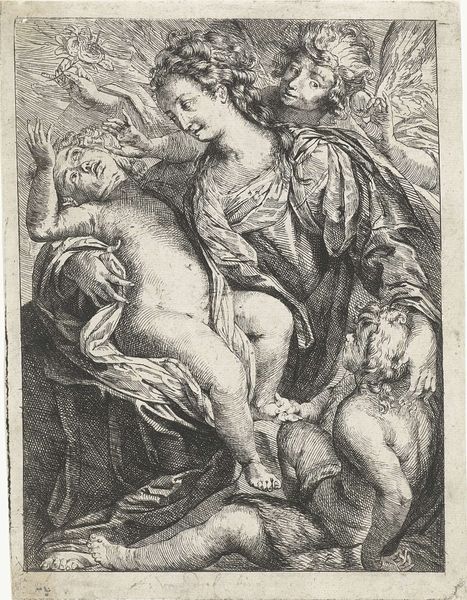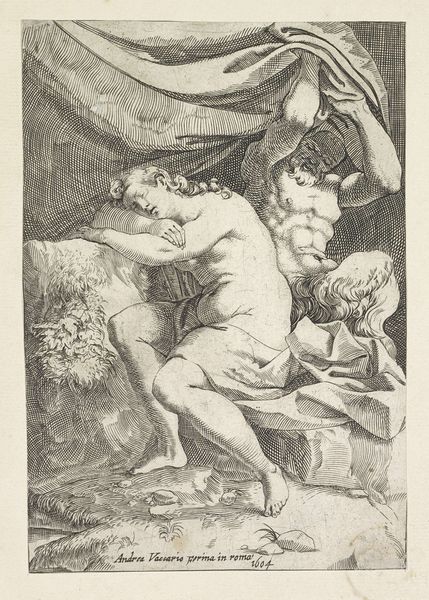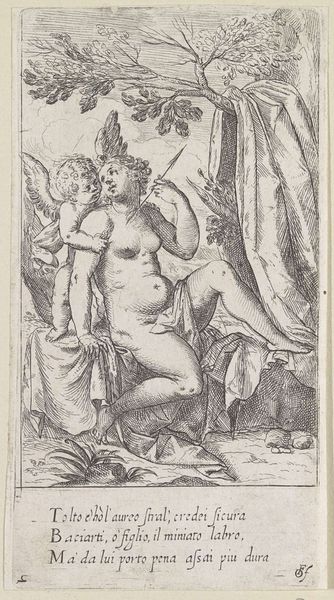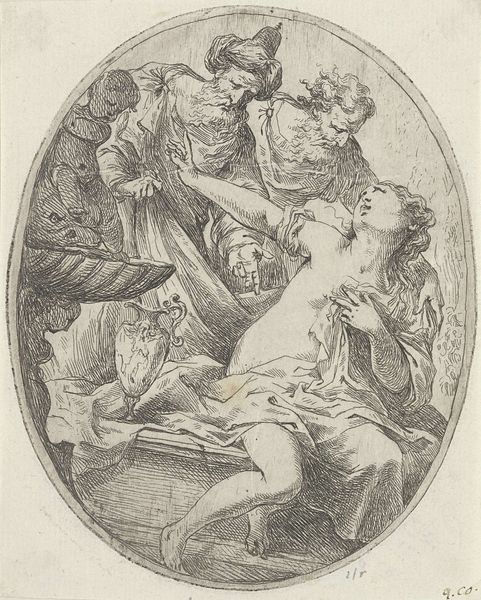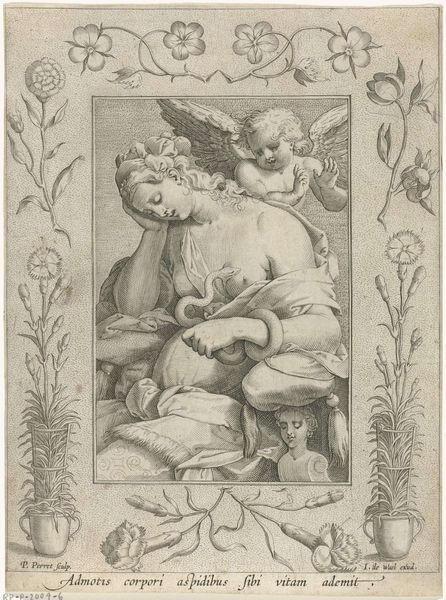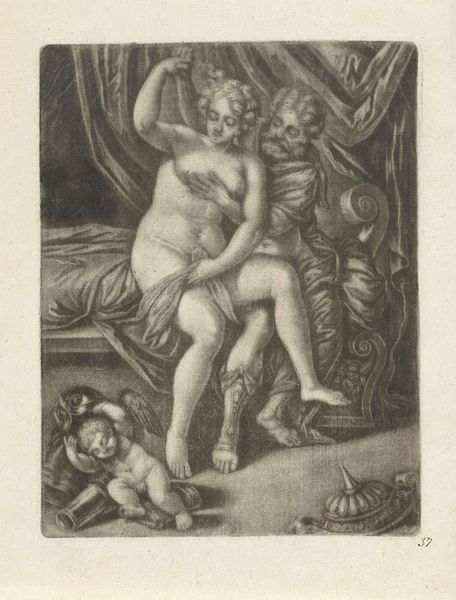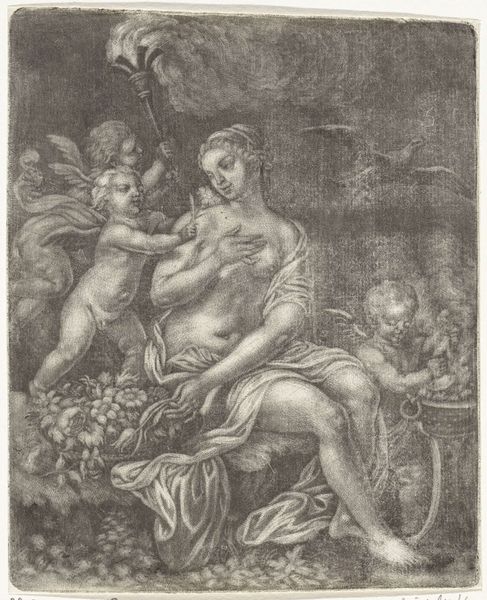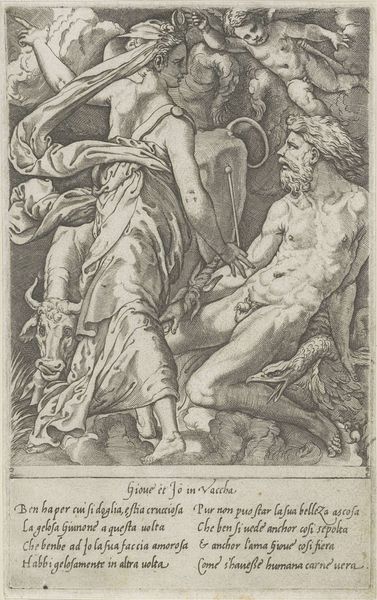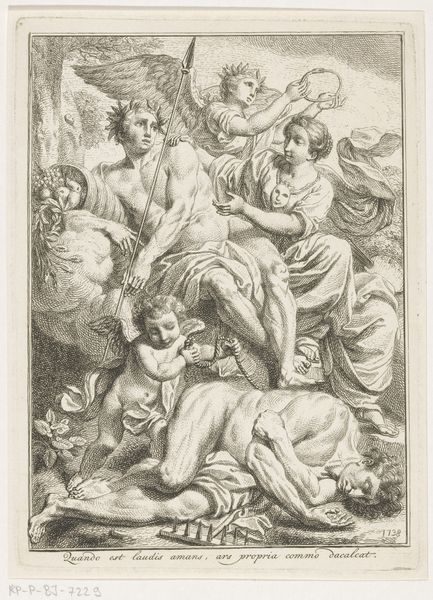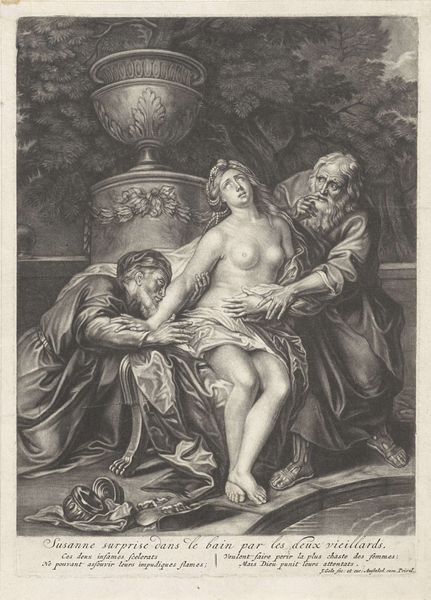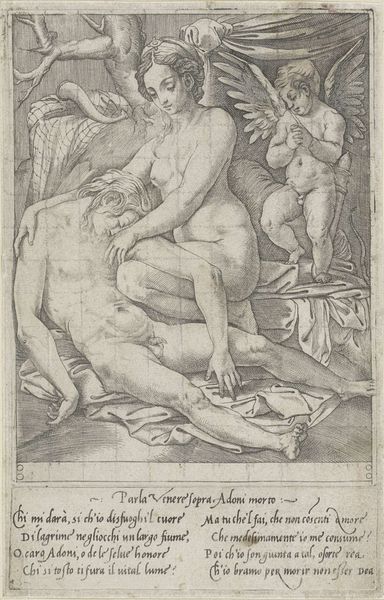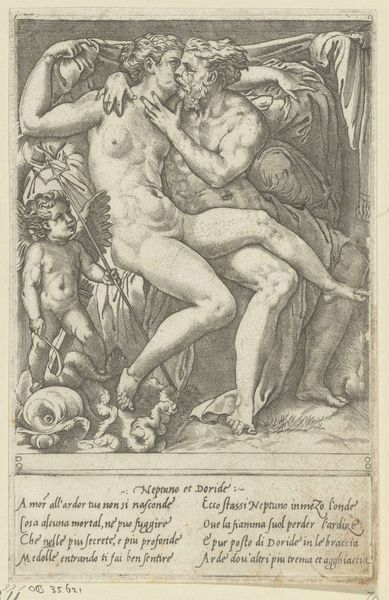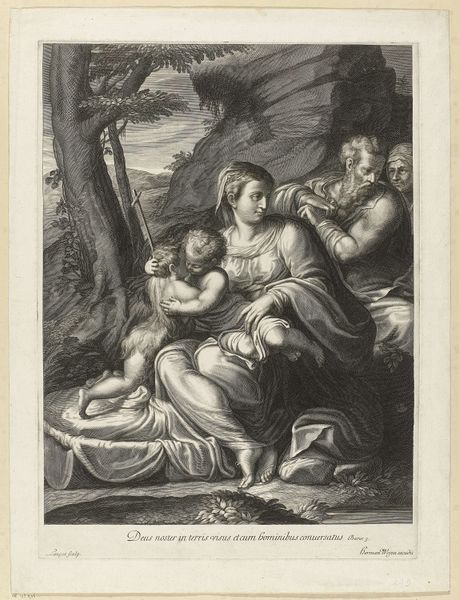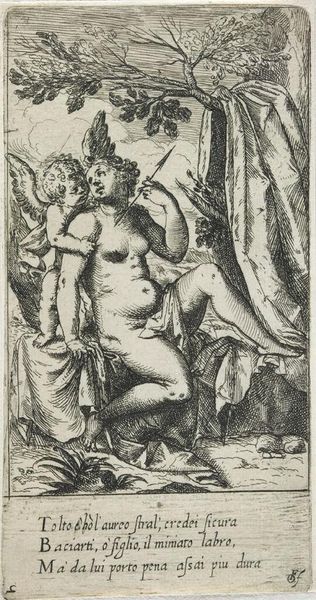
print, engraving
#
portrait
#
baroque
# print
#
old engraving style
#
figuration
#
history-painting
#
engraving
Dimensions: height 191 mm, width 142 mm
Copyright: Rijks Museum: Open Domain
Editor: We're looking at D. Claessens's engraving, "Maria met Christus en Johannes," created between 1650 and 1670. The density of lines makes it kind of dizzying! What do you make of the composition here? Curator: Focusing on the structural arrangement, we observe a clear pyramidal form. The figures are tightly interwoven, creating a dense surface of intricately etched lines. Notice how the artist uses the varied density and directionality of line to imply both form and texture, a common baroque technique. The light falls across the smooth flesh, contrasting the coarser rendering of the drapery. Editor: So the structure isn’t just the figures, but how the lines themselves are composed. How would you analyze that contrast you mentioned? Curator: It provides visual interest and also emphasizes the hierarchical importance of the figures. See how the Virgin's form and the Christ Child is highlighted, drawing the eye toward those areas. Also, observe the positioning of figures within this constructed pictorial space. What does their placement communicate to you? Editor: I see the angel figure holding what appears to be lilies over the baby, and his raised arms mimic the Christ Child's gesture. The figure at the bottom is lower in status and support the entire group? It creates an implied motion towards the heavens? Curator: Precisely. Consider too how Claessens employed semiotic codes typical of the period. For example, the lilies often represent purity and innocence, connecting these forms with deeper cultural meanings. The etching itself becomes a system for conveying narratives and ideas. What have you gleaned overall? Editor: It’s fascinating to consider the different directions and densities of the etching not only as a technique to create contrast, but a system of symbols which builds up meaning as much as the image. Curator: Agreed. Through formal examination, we begin to decipher this period's aesthetics.
Comments
No comments
Be the first to comment and join the conversation on the ultimate creative platform.
